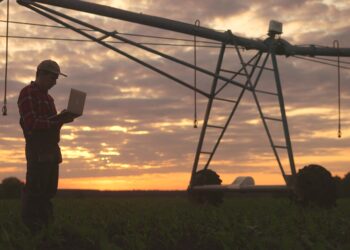The downturn in the oil and gas industry is unlike any other.
Since we published our midyear outlook in July, the global economy and capital markets have rebounded faster than expected in the third quarter of 2020. However, the pace of recovery in the coming months remains highly uncertain as mounting COVID-19 cases amid winter conditions, especially in Europe and the United States, may trigger another round of shutdowns and restrictions. Any further normalization of economic activity largely depends on how the pandemic evolves during the winter and, most importantly, when COVID-19 vaccines reach the general public. Even when the virus is controlled, economies are expected to continue dealing with the adverse impact of deteriorated fiscal balances and the effect of muted business investment on the labor market and consumer spending in 2021.
What does this mean for the oil and gas (O&G) industry? Global oil demand fell by 25% in April, but it has rebounded sharply since then, cutting its losses to just 8%. Looking ahead, 2021 oil demand is expected to recover strongly but remain lower than it was at pre–COVID-19 levels—about 4% lower in the base case, and about 7% lower in Rystad Energy’s second-wave scenario. Similarly, oil prices and energy stocks have underperformed base metals and the broader S&P 500 index by about 10% and 25% and 6% and 10%, respectively, since July 2020. Mass layoffs and heightened cyclicality in employment continue to challenge the industry’s reputation as a reliable employer. US O&G companies laid off about 14% of permanent employees in 2020, and our research shows that 70% of jobs lost during the pandemic may not come back by the end of 2021.
Although the oil and gas sector is used to the highs and lows of economic and price cycles, this downturn seems unlike any other. In fact, it’s the “great compression” of the O&G industry. With the survival of many companies at risk, and the longer-term decline in petroleum demand, the next decade could look very different for the entire O&G value chain. 2021 will either be a leapfrog year or a test of endurance for many. We see five oil and gas trends that may challenge traditional methods of oil and gas production in 2021, determine the direction of the industry, and begin separating the pioneers from the followers.
Corridor of uncertainty
The Brent oil price benchmark has reflected inertia at around $45/bbl since June 2020.7 Oil’s stability at this price range is reassuring, but its inability to break the upper level ($50/bbl) despite a bull run in the broader equity and commodity markets is disconcerting. In fact, oil was the worst-performing commodity, falling behind even coal in 2020, and its range-bound behavior has been atypical. The result: O&G companies remain short of confidence and capital to invest at this price range. What do range-bound oil prices mean for the industry’s supply-demand balance?
Oil and gas is a depleting resource with an average annual production decline rate of 6–7%. Add to that five years of low capital spending and deep cuts in 2020 (global O&G capex is projected to fall by more than 23% year over year in 2020) and we have an industry at risk of underinvestment. Just to replace the annual consumption and offset natural field declines, the industry would need to invest more than $525 billion annually. But will this underinvestment affect 2021 supplies? Probably not, considering OECD crude inventories are still at an all-time high of 2,962 million barrels and OPEC+ nations have 7–8 MMbbl/d of pledged output cuts to be rolled back.
Yet in the medium-to-long term, underinvestment could affect supplies, especially from non-OPEC producing nations. But, unlike in the past, demand (or lack of it) will likely have a larger influence on the future supply-demand balance. Although there is a visible uptick in road traffic, local office commuting and international travel both remain muted: Work-related travel in the United States still remains 35-40% below the prepandemic level. Even in the base-case scenario, analysts expect 2021 global jet fuel demand to remain below 75% of prepandemic levels.
With the risk to both supply and demand, the jury is still out on the future supply-demand balance. In our postelection poll, 44% of O&G executive respondents expect the oil market to remain in balance, and 33% of O&G respondents expect a high risk of a new supply crunch over the next five years (2020–2025). In light of this uncertainty, what should O&G companies do to guard against downside risk and be ready for any potential upside in 2021? Companies should consider accelerating digital transformation to reduce operating costs, “variablizing” their fixed costs of support functions, maintaining flexibility in their operations, and optimizing their capital allocation for the projects of tomorrow.












